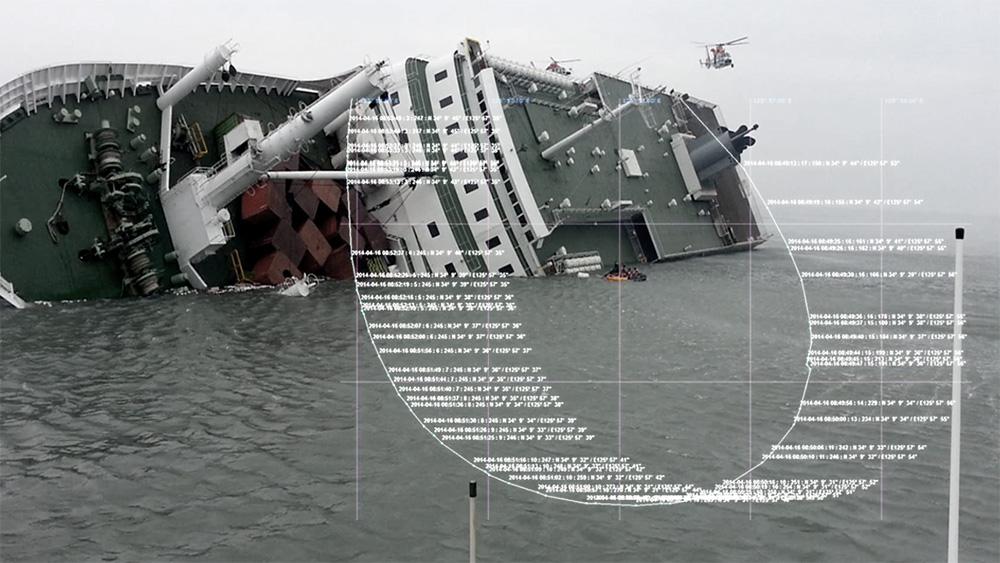
Focal Point of Sewol Ferry Investigation: the Stability of the Vessel
2017년 09월 15일 10시 15분
Recently recovered black box videos from vehicles parked inside the Sewol ferry have shown key clues that may testify key contributing factor of the ferry’s sharp tilt, which led the drifting ferry ended up sinking so rapidly.
According to the videos the Korea Center for Investigative Journalism (KCIJ)-Newstapa exclusively obtained from Rep. Kim Hyun-kwon of the Minjoo Party, large cargos, which inclined to one side to break windows of the Deck C, appeared to had been one of the most convincing factor that contributed to the rapid tilting and sinking. Deck C was an area located in the second basement floor of the Sewol, containing massive cargos such as commercial trucks and passenger vehicles. The broken windows led to the massive influx of seawater inside the vessel.
Cracks on the deck’s walls, which KCIJ-Newstapa unveiled the existence for the first time, appeared to be another crucial contributor to the rapid sinking.
How did the seawater enter the Deck C’s left wall immediately after the Sewol ferry’s sharp list?
Blackbox videos, obtained from a 1-ton truck parked right next to the Deck C’s left wall, showed that a massive volume of seawater broke into the wall right next to the truck’s driver’s seat immediately after the ferry rapidly tilted. Water also entered through small cracks on the deck’s front wall just after the tilt.
Then, where and how did the water break into the vessel?
Newstapa was able to find the key clues from its own archives, in particular the videos and photos taken by Chonghaejin Marine employees just before taking over the ferry in September 2012 in Japan. They captured every little corner of the vessel’s internal and external parts.
One of the videos included a certain area where 1-ton truck was parked inside the Deck C.
When tried overlapping the truck’s shape in this area using a computer simulation program, Newstapa was roughly able to reenact composition of the key locations: A window right next to the truck’s driver’s seat and an air ventilation facility on the front left. Sunlight was beaming from above the ventilation facility, the video clearly showed, meaning that there was a hole that is directly connected to the outside.
The massive water stream, which burst into the deck’s front as the truck collided the wall, is presumed to have broken into the deck from the ventilation facility.
Then, what about the sea water poured in from side of the driver’s seat?
It is highly likely that the water had entered through the window on the deck’s wall, considering the direction the truck was parked and water stream coming in. This window is supposed to be completely dry during a normal operation, as it is positioned 9 meters above the surface of the water.
However, the ferry had already been tilted to 47 degrees at the moment, resulting in the ferry’s wall touch the sea surface while the ferry swerving to the right. The sudden and sharp list had led the truck collide to the wall to break the window, eventually allowing in the massive amount of sea water.
Large influx of seawater also possible through broken windows and air ventilation facilities while drifting
There are 13 windows on the left wall of Deck C.
If many of them had been damaged while cargos falling to the deck’s left side, it is highly likely that another large amount of seawater had flown in through the windows while the ferry was drifting.
The bulwark of the front deck, which is located at the same level as the broken windows, had already been sunken below the sea surface by 9:15 a.m., according to the videos taken from the Doola Ace, an oil tanker vessel that reached Sewol, at the time.
In the circumstance, the sea water may have swept into the Deck C not only through the broken windows but also the air ventilation facilities -- located below the windows.
The Sewol investigative committee, a temporary investigative body consisting of vessel experts and law experts, recently found that the ventilation facility was directly connected to the deck store -- located below the waterline.
A deck store is a container-box-like part located in the center of the main deck to store different tools and equipment required to maintenance of the upper deck.
Continuous influx of seawater into the Deck C through the vent could have greatly contributed to accelerate the speed of sinking of the ferry.
Existing reports on the process of the ferry’s inundation have so far assumed that water mainly entered through doors to the Deck D and cracks on the left side ramp while the ferry was still drifting.
However, the need to re-investigate the cause and process of rapid waterlogging inside the ferry now has emerged as the newly-disclosed black box videos prove the possibility of water entering via Deck C -- in particular cracks on the left wall, broken windows and vent.
뉴스타파는 권력과 자본의 간섭을 받지 않고 진실만을 보도하기 위해, 광고나 협찬 없이 오직 후원회원들의 회비로만 제작됩니다. 월 1만원 후원으로 더 나은 세상을 만들어주세요.